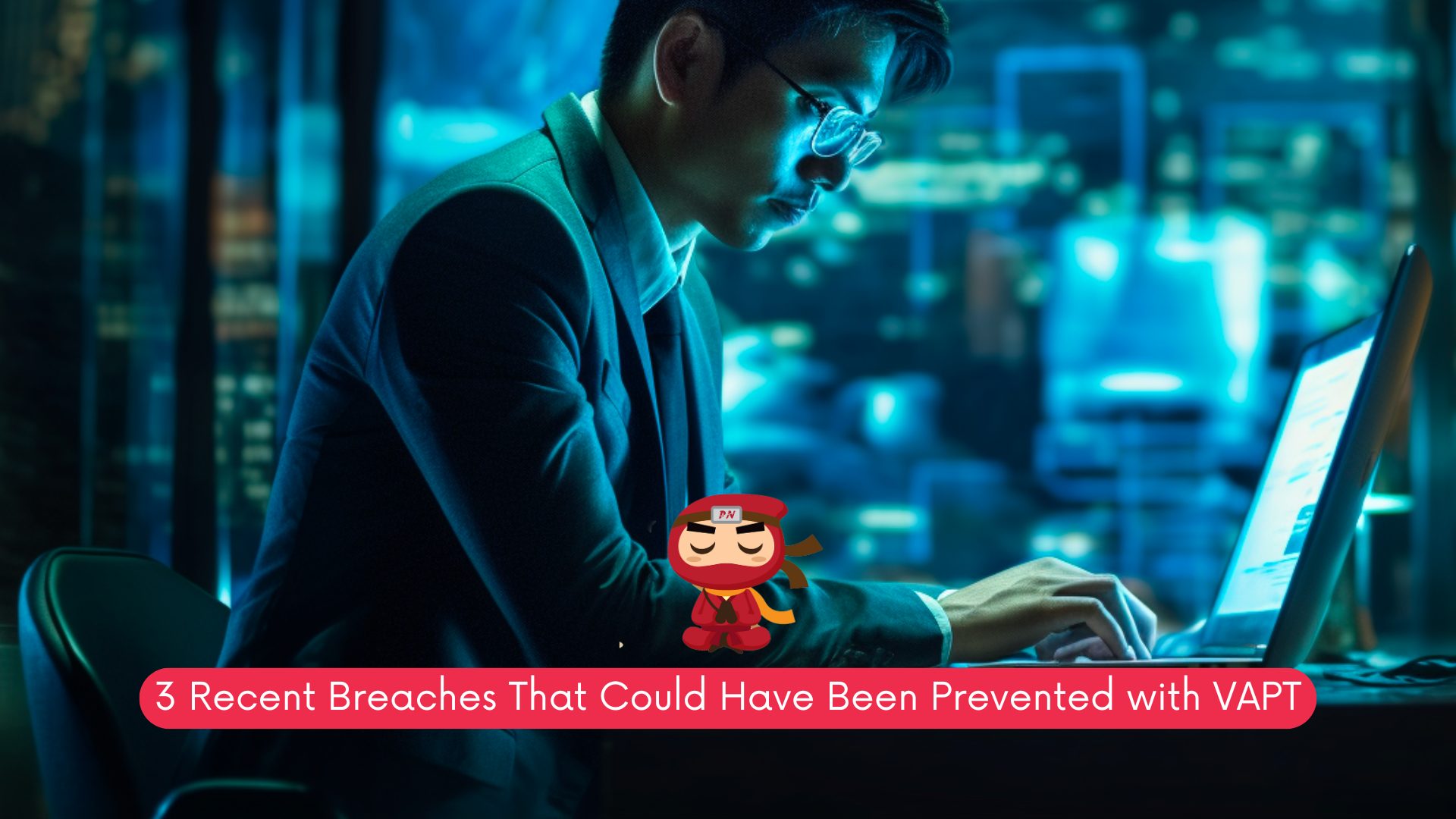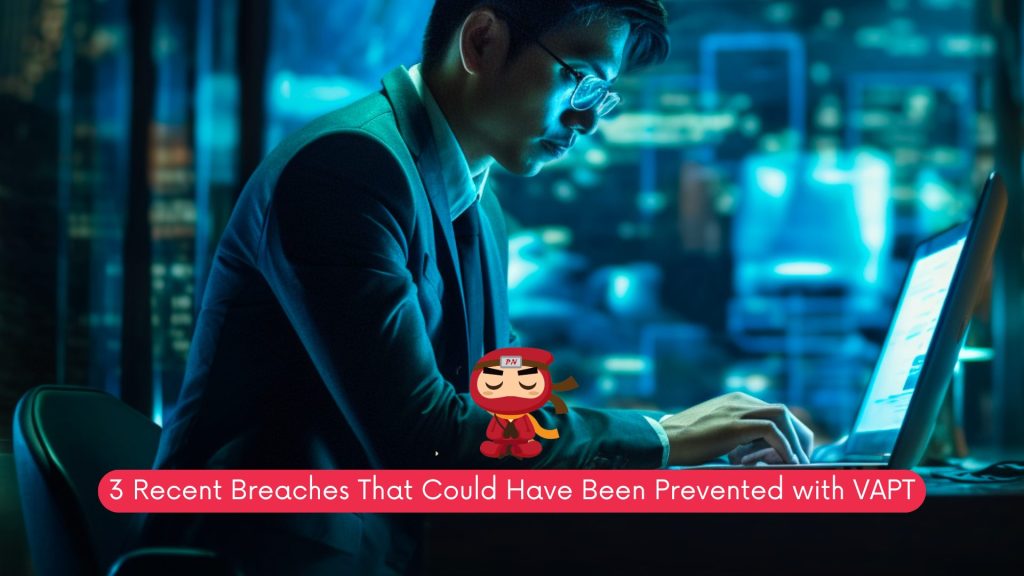KEEP IN TOUCH
Subscribe to our mailing list to get free tips on Data Protection and Cybersecurity updates weekly!







Data is the currency of the digital age. From customer records and financial information to proprietary business insights, data powers daily operations and underpins strategic decisions. But with this reliance comes risk. Cyber threats are more sophisticated than ever, and a single breach can dismantle years of hard-earned trust and operational stability. For organisations serious about security, Vulnerability Assessment and Penetration Testing — commonly known as VAPT — is not just recommended; it’s essential.
VAPT is a structured security process designed to uncover weaknesses within your organisation’s IT environment. It combines two key elements: vulnerability assessments that identify known security gaps and penetration tests that simulate real-world attacks. When executed properly, VAPT provides a realistic picture of your organisation’s exposure to cyber threats, along with actionable guidance to resolve any issues found.
The stakes for failing to conduct regular VAPT are growing higher each year. High-profile breaches are no longer limited to massive global enterprises. They increasingly affect medium and small-sized businesses that mistakenly believe they are under the radar. The reality is stark: cybercriminals thrive on exploiting unpatched vulnerabilities, misconfigured systems, and untested endpoints. Without regular testing, these weak points go unnoticed until it’s too late.
Take, for instance, the MOVEit Transfer software breach in 2023. A critical SQL injection vulnerability in Progress Software’s MOVEit tool was exploited by cybercriminals, compromising data belonging to government agencies, financial institutions, and educational organisations across the globe. The breach affected more than 2,000 entities and over 60 million individuals. This attack was not sophisticated in nature, it merely took advantage of a known weakness that could have been flagged during a routine vulnerability assessment.
Another notable incident involved genetic testing company 23andMe, which suffered a major breach due to credential stuffing, a method where attackers use leaked passwords from one breach to access accounts on another platform. In December 2023, it was revealed that roughly 6.9 million user profiles were compromised, including highly sensitive ancestry and genetic data. While credential stuffing targets user behaviour, the lack of internal alerting mechanisms and failure to implement better rate-limiting and account protection protocols could have been identified through simulated attack exercises, such as those offered by VAPT.
And then there’s the case of MGM Resorts, where a 10-day cyberattack in September 2023 severely disrupted operations across hotels, casinos, and customer-facing services. Hackers reportedly used simple social engineering tactics to breach internal systems, ultimately causing an estimated loss of over $100 million. Penetration testing, especially one that factors in social engineering scenarios, could have revealed how easily employees could be manipulated into giving access.
These examples demonstrate how attacks often rely on known vulnerabilities or predictable human behaviour. The purpose of a proper VAPT isn’t just to tick compliance boxes. It’s to expose weaknesses in your defences before malicious actors can. It’s an exercise in resilience-building, uncovering gaps that would otherwise remain hidden beneath surface-level audits or automated scans.
When considering VAPT, organisations must evaluate several key factors. The scope of testing should be clearly defined, encompassing all digital assets: cloud infrastructure, APIs, web applications, internal servers, and even physical access points. This ensures a complete picture of the security landscape, rather than a piecemeal view limited to a few endpoints. Frequency is another crucial consideration. A one-off test may help in the short term, but cyber threats evolve rapidly. Continuous or at least periodic testing ensures your defences are regularly updated against emerging threats.
The human factor must also be addressed. Security is only as strong as the people enforcing it. Even the most robust firewall can be rendered useless by an employee clicking a phishing link or reusing a weak password across platforms. Penetration testing can simulate these scenarios, helping teams identify where training and awareness are lacking. The result is not just a stronger infrastructure, but a security-conscious culture.
Another important aspect is the quality of the reporting delivered post-assessment. A good VAPT isn’t judged by the volume of issues identified but by the clarity, relevance, and prioritisation of its findings. An effective report doesn’t just dump technical jargon. It maps vulnerabilities to potential business impacts, helping decision-makers understand what’s at stake. It should also provide a clear path for remediation, outlining which issues demand immediate attention and which can be resolved in the medium term.
Despite the obvious importance of VAPT, many organisations delay or avoid it due to perceived cost, operational disruption, or a belief that existing defences are sufficient. This mindset is dangerous. The financial impact of a breach — from data loss and ransom payments to regulatory fines and reputation damage — far outweighs the investment in proactive security testing.
For VAPT to be truly effective, however, it must be executed by a reliable and experienced provider. This is where firms like Privacy Ninja come into play. As a trusted data protection services company, Privacy Ninja brings deep expertise in conducting VAPT tailored to the specific risks and environments of each client. Their team of certified professionals uses industry-leading tools and techniques to simulate real-world attacks while maintaining strict confidentiality and minimal operational disruption.
What sets Privacy Ninja apart is the breadth of its services that extend well beyond VAPT. In addition to identifying vulnerabilities, Privacy Ninja offers complementary data protection solutions such as Data Protection Officer as a Service (DPOaaS), Smart Contract Audits, and Source Code Review. These services work in tandem with VAPT to form a comprehensive cybersecurity and compliance framework. By addressing both technical and regulatory requirements, Privacy Ninja helps organisations build a truly robust defence posture — one that not only mitigates threats but also ensures long-term compliance with data protection standards.
In a time when cyberattacks are not a question of “if” but “when”, organisations can no longer afford to operate without a clear understanding of their vulnerabilities. Investing in a thorough VAPT programme delivered by a trusted partner like Privacy Ninja is one of the most decisive actions a business can take to secure its digital future. The risks of complacency are far too great. It’s time to test your defences before someone else does it for you.